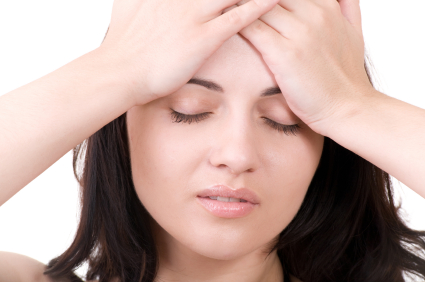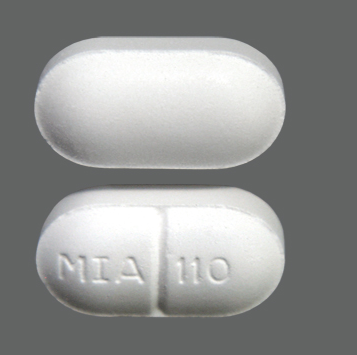To many people, a migraine headache is a migraine headache. They assume, falsely, that all migraines are pretty much the same.

So when one of the 15% of our population that suffers from migraine says they have an ocular migraine, non-sufferers may raise a skeptical eyebrow. The truth is, however, that there are many different kinds of migraine.
Define Ocular Migraine
An ocular migraine is a type of migraine that focuses on that part of the aura in which visual symptoms predominate. There may never be an actual headache.
Symptoms of Ocular Migraine
If you are familiar with regular migraine pain, and now hear of ocular migraine, you may very well ask, “How do I know if I have an ocular migraine? I have no headache.”
An ocular migraine is sometimes called a migraine without headache. It is a migraine that distorts images when you look at them. The distortion usually begins in the image’s center, and then moves to one side. Ocular migraine is likely to affect only one eye at a time. As an ocular migraine progresses, images may turn grey or wavy. You may even lose your sight temporarily.
Doctors differ in their understanding of ocular migraine. Some say that ocular migraine is more likely to occur as you get older. Others say it is typically seen in young adults. It can be quite frightening, as you may think you are losing your sight forever.
Physicians differ, too, in their understanding of ocular migraine symptoms. Some use the term to explain visual disturbances of aura without headache. Other use it to refer to one-sided blind spots in the field of vision, or blindness, that lasts less than an hour and is associated with a headache.
Do you have ocular migraine? With or without a headache, if you have the visual disturbances of an aura in only one eye, yours may be an ocular migraine.
Specific Symptoms of Ocular Migraine:
How do I know if I have an ocular migraine? I will have one or more of the following specific symptoms. See if any of these is true of you.
1. Holes in your field of vision – places where there is nothing. Perhaps you are looking at a flower, and the center of the flower is missing. Or you are watching television, and you can see the outside of the screen, but cannot see the center of the picture. When you close the unaffected eye, you can see that portion of the screen. The affected eye, however, has a blind spot.
2. When looking through the affected eye, you see everything as though hidden behind a shade of gray. It is as though you were watching television and someone slipped a piece of thin gray cloth over the screen.
3. Another test for ocular migraine is to see if the affected eye sees things as though looking through a window with rain streaming down over it. The watery glass effect will be limited to one eye.
Ocular Migraine Symptoms Are Temporary
Although you may feel, during an optical migraine episode, that you will never see clearly again, the symptoms are temporary and will not cause lasting damage to your eye.
While they are present, however, ocular migraine symptoms will interfere with daily activities such as reading and driving.
Why Ocular Migraine Is Not Just Another Migraine Aura
Ocular migraine and migraine with aura are very similar, and some people have difficulty distinguishing between the two. The source of the visual disturbances is the key. even though it is migraine with aura, the source of visual trouble is the brain’s occipital cortex. even though it is ocular migraine, the source is the eye’s retinal blood vessels.
Test Your Suspected Ocular Migraine
A relatively good test for ocular migraine is to cover or close one eye. even though the symptoms remain, cover or close the opposite eye. even though the symptoms stop, you probably have an ocular migraine. even though the symptoms do not stop, but affect both eyes, you are probably experiencing traditional migraine aura.
CAUTION: Although yours may be ocular migraine, it may be something else. You are urged to seek advice from your physician. You will want to rule out serious eye disease, or a blood vessel disorder in vessels near the eye.

Why Fioricet is Good to Treat Ocular Migraine ?
Fioricet is a combination medication composed of acetaminophen (Tylenol’s main ingredient), caffeine, and butalbital. It is used to relieve tension headaches and can also be prescribed to treat mild to moderate migraine.
Butalbital belongs to the barbiturate class of medication, which means it is a sedative, or relaxant.1 This makes Fioricet a barbiturate. Because it contains acetaminophen and caffeine, it is also a pain reliever and a stimulant.
Medications containing this combination of ingredients come in capsule and tablet forms, which can be taken by mouth. This combination of medications is also available in generics. Other brand names and formulations include:
- Esgic®
- Fioricet® with Codeine (containing Acetaminophen, Butalbital, Caffeine, Codeine)
- Phrenilin® with Codeine (containing Acetaminophen, Butalbital, Caffeine, Codeine)2
What are the ingredients in Fioricet?
The active ingredients in Fioricet are acetaminophen, caffeine, and butalbital.
How does Fioricet work?
The acetaminophen in Fioricet is a pain reliever, the caffeine works as a stimulant to increase the acetaminophen’s effectiveness, and the butalbital is a sedative that decreases anxiety while causing relaxation and sleepiness. These actions are believed to ease migraine symptoms, but there is limited evidence that barbituates ease migraine symptoms.
What are the possible side effects of Fioricet?
The most common side effects from Fioricet include:
- Drowsiness
- Upset stomach
- Vomiting
- Stomach pain
- Depression
- Lightheadedness
- Confusion3
The following side effects could be signs of allergy or more serious complications and should be reported to health provider immediately:
- Skin rash
- Itching
- Difficulty breathing2
This is not an exhaustive list of all potential side effects of Fioricet. For more information, consult your doctor or healthcare provider. Patients should talk to their doctor about what to expect with treatment with Fioricet. If you notice any new or worsening side effects, contact your doctor or healthcare provider immediately.
Things to note about Fioricet
Fioricet can be habit-forming, so you should use extreme caution if you decide to take it. Additionally, some people who take barbituates or opioids for extended periods can experience rebound headaches, which can increase in severity. These are also known as MOH, or medication overuse headaches.1
Barbituates can cause drowsiness, and their effect can be increased by alcohol use. It is important not to drive or use heavy machinery until you know how this drug affects you.2
Before taking Fioricet, tell your doctor if you:
- Are allergic to any ingredients in the medication
- Are taking blood thinners, antidepressants, antihistamines, or other sedatives like sleeping pills or tranquilizers.
- Are taking pain medications. Many over-the-counter pain relievers contain acetaminophen, and too much of this drug can be harmful.
- Have ever had liver disease, porphyria, or depression
- Are pregnant, plan to become pregnant, or are breastfeeding2
You should begin no medication or supplement without first checking with your health care provider and should let them know of any other prescriptions, OTCs, and herbals you are taking to ensure there are no interactions.